Interventions and reforms: IT gem in fight for quality education
One such intervention is the Teacher Effectiveness and Learner Achievement tool. This tool takes an attendance automation approach which aims to improve efficiency and accuracy in data management compared to traditional paper-based systems.
Interventions and reforms: IT gem in fight for quality education
By Admin .
Journalists @New Vision
_______________
OPINION
By Marcella Karekye
Reform, according to the Oxford Advanced Learner’s Dictionary, is change that is made to a social system, an organisation, etc., in order to improve or correct it. Therefore, by definition, when a system or an organisation is reformed, it must not remain the same.
Uganda’s transformation journey has been articulated best by President Museveni. This is simply because he has the ability to detect, define, and diagnose a problem while taking into account the current context, the linkages to external factors, and mindset (what he often refers to as ideology).
The world is global with many member-based organisations. These organisations somehow lead to problem-based evaluations with standard solutions. Uganda will often be the subject of many studies and evaluation reports. Some of these will often present rankings, areas of success and areas of improvement.
Uganda is not where we were even 15 years ago. We have registered impressive strides in terms of human development, economic development, political maturity, peace and security, regional standing, and so on.
One of the sources of a country’s wealth is certainly its human capital, basically its people. A country with a healthy, productive, cohesive population eventually leads to economic growth, which then allows a country to look after its people; it’s a cyclical pattern.
In the latest Human Capital Development Report produced by Government of Uganda in conjunction with the World Bank, it came to light that as Uganda begins her journey to ten-fold growth she needs to double the pace of human capital accumulation between now and 2040 from 39% to 56% as opposed to the usual 45% business-as-usual scenario (World in Data: Data from World Bank 2025).
The same report goes ahead to recommend that human capital improvement requires a life cycle approach encompassing; maternal and newborn care, expanded immunization, early childhood stimulation, access to safe water, quality education, safe learning spaces, opportunities for girls, relevant skills, access to quality jobs, access to reproductive, maternal, child health services, access to child care, social safety net programs pensions, lifelong learning opportunities and adequate healthcare.
Government of Uganda has been on a continuous journey of different reforms and interventions in the respective sectors to match the human capital development requirements.
When reports connote that there’s still some room for improvement, many times these are interpreted or depicted by the media or other analysts as inaction or failure on the part of the Government.
The VeryWellMind, an online resource on information about Psychology, introduces us to a phenomenon called the negativity bias. The negativity bias is the human tendency not only to register negative stimuli more readily but also to dwell on these events. This bias is also known as positive-negative asymmetry, meaning we feel the sting of a rebuke more powerfully than we feel the joy of praise.
It goes on to assert that studies have shown that negative news is more likely to be perceived as truthful. Since negative information draws greater attention, it also may be seen as having greater validity. This might be why bad news seems to garner more attention, and most of the media outlets take the approach of publishing bad news to derive sales and traffic to their publications or news sites.
Government interventions get little coverage or perhaps are taken for granted. We might argue that the government is obliged, but are we tracking the interventions, reforms and outcomes?
In 1997 Government embarked on a programme to provide universal access to education. The first step was to provide universal Primary education (UPE) government moved to facilitate universal Secondary education, and to a great extent, Tertiary education.
UPE's gross enrollment was at 8.3 million as of 2023, its 25th year of existence. Government investment in infrastructure, teacher training, and instructional materials has been substantial. In a bid, therefore, to realise return on investment, which is a population that is productive and also equitably served, the government has introduced a few systems or tools to manage efficiency in the sector. These interventions are meant to ensure that teachers are teaching, and learners are attending school and being transformed through the education being offered.
One such intervention is the Teacher Effectiveness and Learner Achievement tool. This tool takes an attendance automation approach which aims to improve efficiency and accuracy in data management compared to traditional paper-based systems.
This tool is built to capture more valuable information about attendance, like time, location, staff choice of tasks to do and then transmit the data digitally to the central system at the Ministry of Education and Sports headquarters. This information dashboard is visible to head teachers, district inspectors or education officers who find it in a ready-to-use format (analysed and well-presented). The stakeholders are also able to access system-generated reports.
As at writing this article, the system is live in 5000 out of 13,964 schools, 4,446 of which are Primary Schools, 696 Secondary and 29 Total Certificate Awards Institutions. The expected total number of Primary, Secondary and Certificate Awarding institutions that are meant to be on the system are 12,470, 1,346 and 196, respectively.
How the system works
The system works by the Ministry providing smartphones to all government schools, a mobile app and a hosted web/internet application that is used by education and local government. Ministry officials then use the system to produce reports on the status of school performance or follow up on outstanding issues flagged by the system.
The TELA System, with its face biometrics and real-time data synchronisation between the school and the Directorate of Education Standards in Kampala, helps achieve most of these goals.
Initially, school data is uploaded into the web/online system, and teacher data is captured by enrolling each staff by capturing their facial images and storing them in a database, often along with other relevant information like national identity data (NIN) and work ID. From then on, whenever they approach the school offices, they clock in and out using the school smartphone. The system does not allow signing or signing outside of the designated office premises. This eliminates the possibility of collecting inaccurate data from recording ‘ghosts’.
A typical day in a school, as captured by the system, looks like this:
On arrival: A teacher is enrolled on the TELA System using the smartphone, and their face biometrics, i.e unique features and image patterns, are captured into the TELA App.
Step 2: The head teacher confirms the enrollment and assigns the teacher a class to teach using the App interface.
Step 3: The teacher then uploads a lesson plan, and the TELA system checks the timetable alignment with education standards.
Every day the teacher clocks in and out of the mobile App, the time input is captured, the selected subjects for the day are marked as done, not done or done but out of time and the time when the supervisor visited a class to check is also automatically recorded with time and geoposition coordinates.
In case the teacher is away on leave or sick, or absent without no permission, an alert and digital record is presented to the head teacher to act upon. At the end of the week, a report is generated and posted to the teacher and the head teacher. School inspectors passing through the school also use the same record to confirm who they found on site and what they were doing in class, or if they are listed as absent.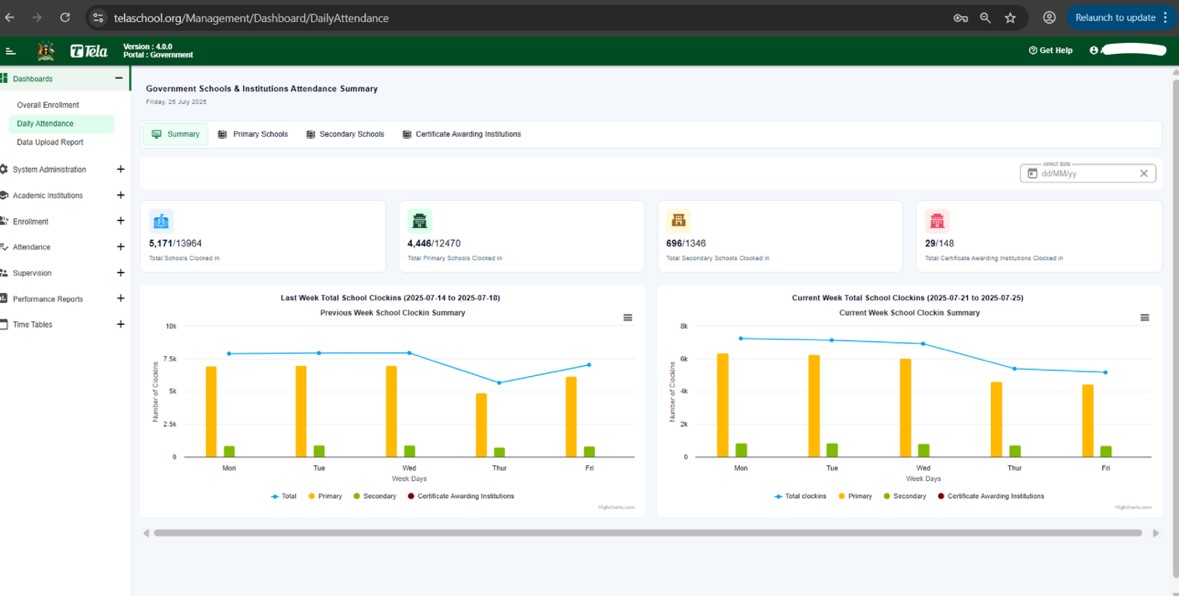
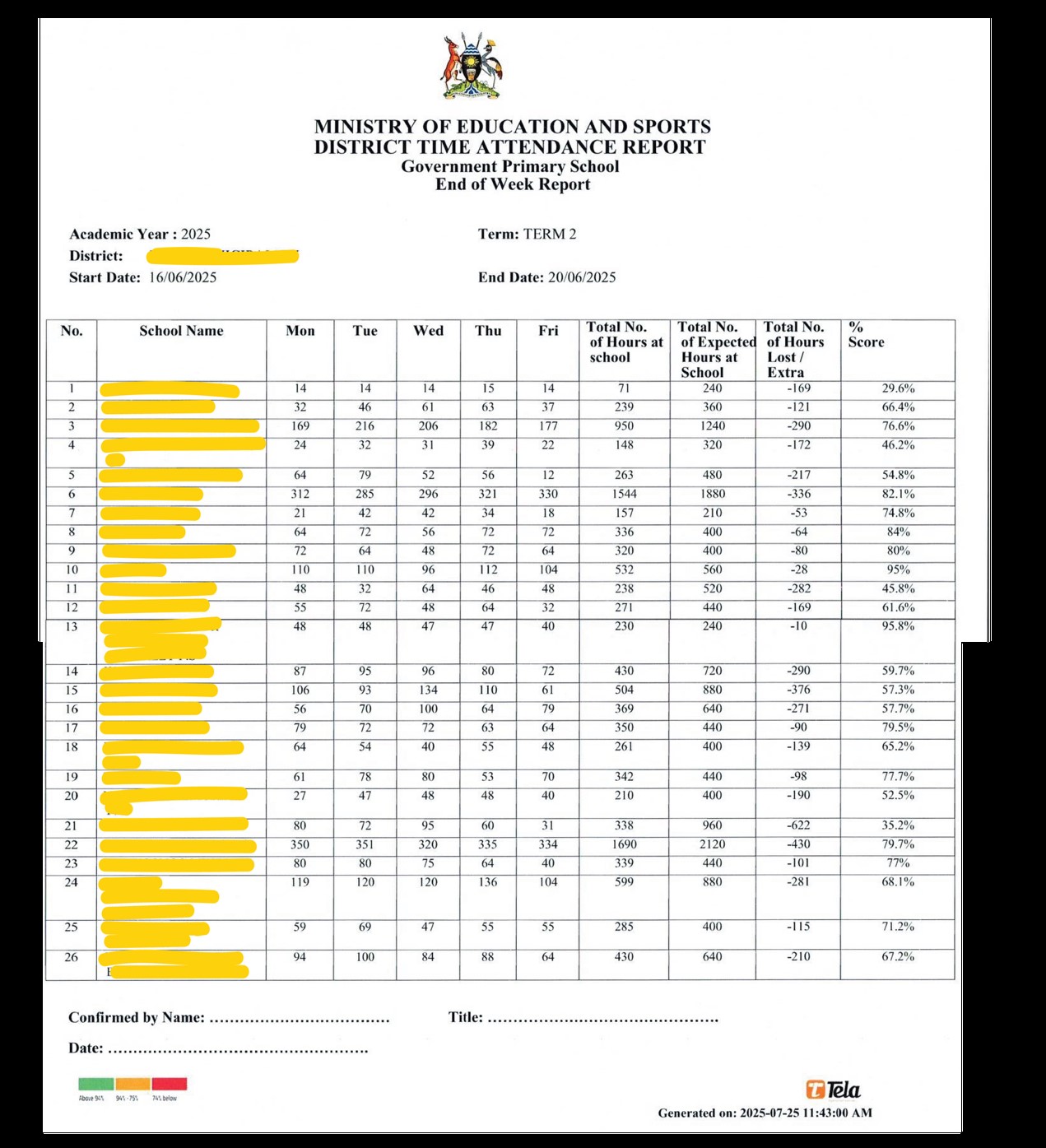
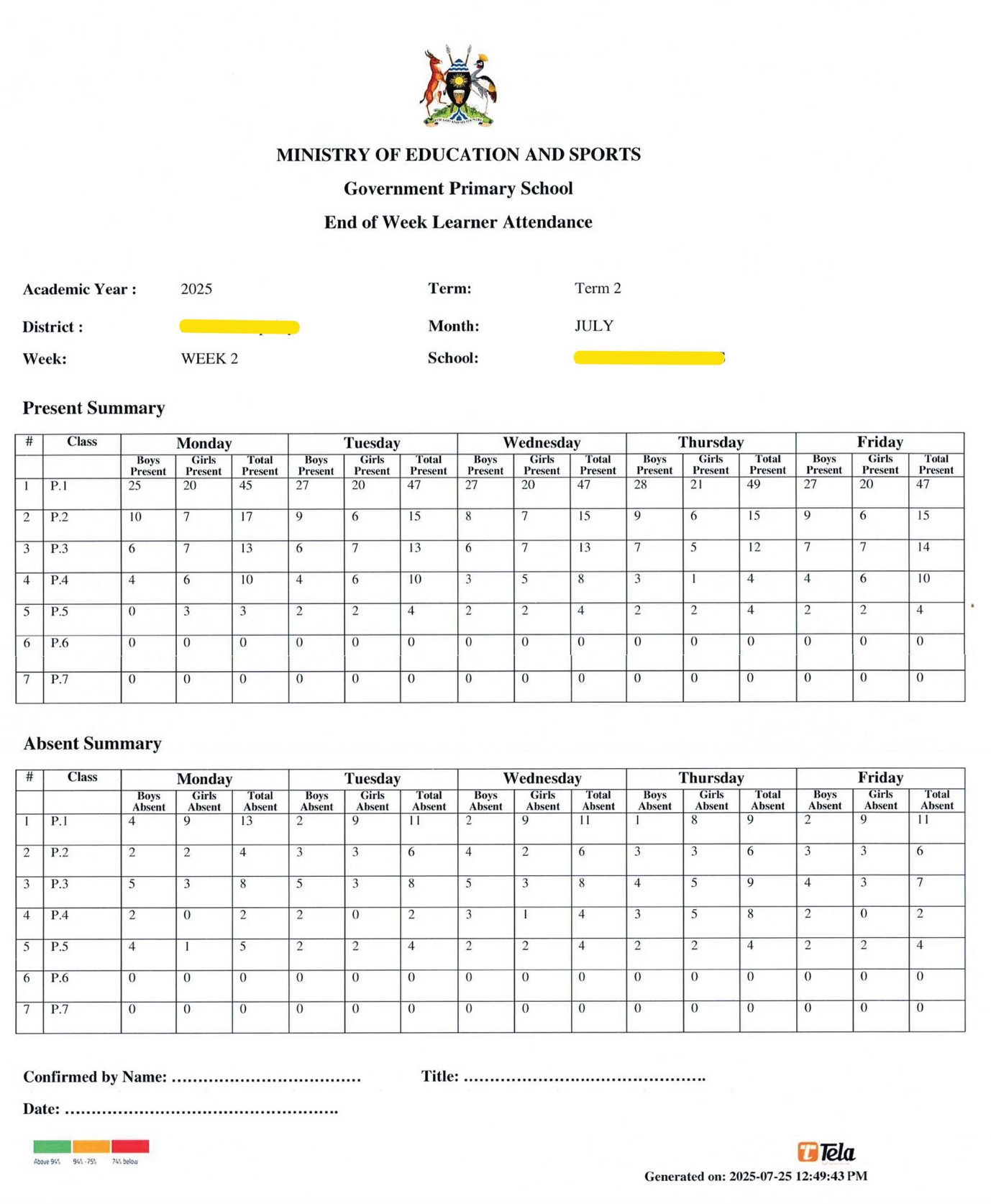

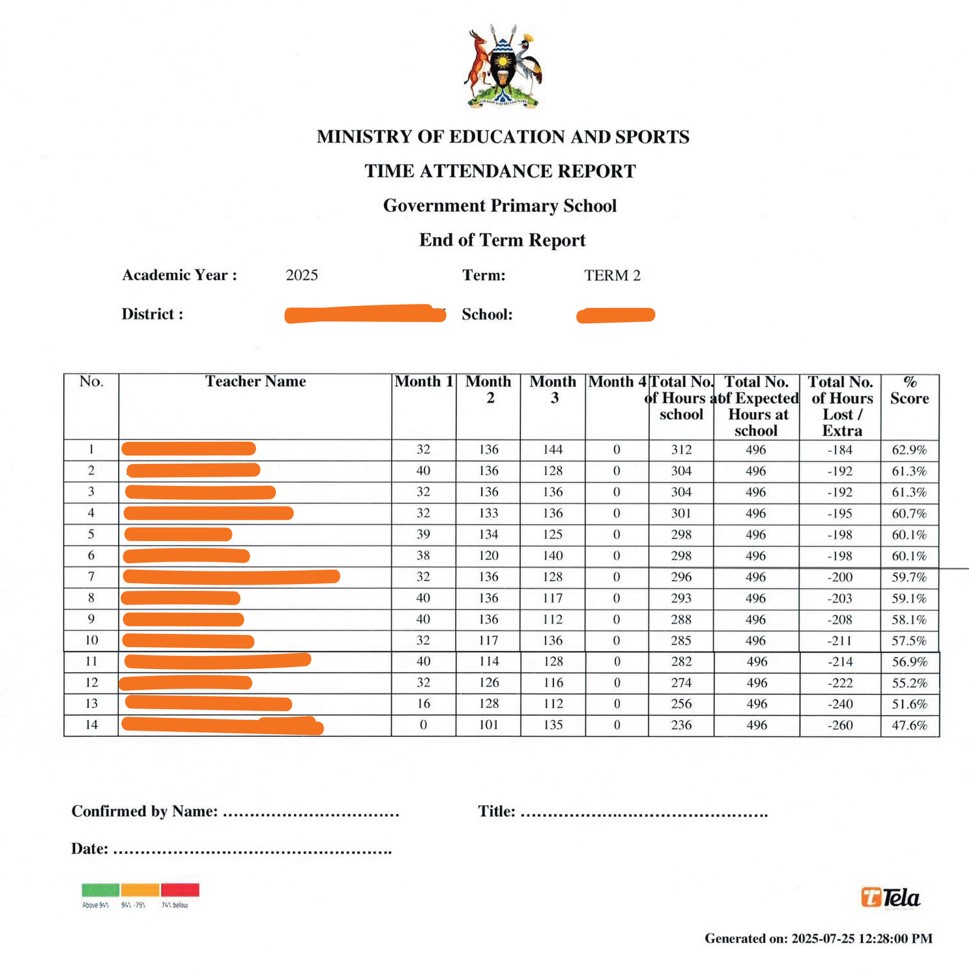
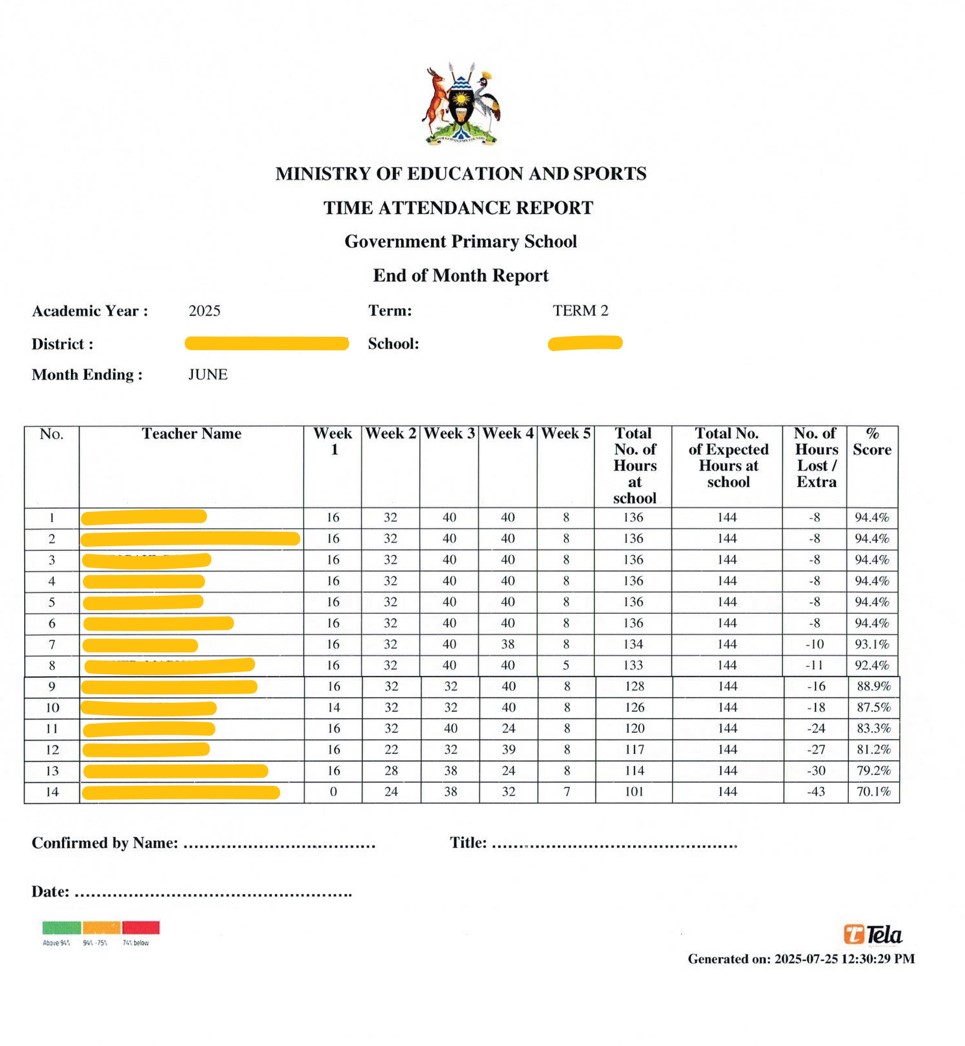


These interventions are not meant to just catch out offenders but to produce an effective and efficient Education system. Whenever the head teacher reviews the TELA system dashboard, he or she is expected to support teachers and learners, adjust school plans or refill the timetable based on the observed trends.
The gains that have been registered include continuous alerts via a dashboard and messages or reports that show the national and district leadership how effectively work in schools is progressing. The system has raised inspection standards in the schools it has been rolled out.
As it is the Education sector is running other systems to ensure efficiency, such as the Education Management Information System (EMIS). EMIS is meant to electronically capture learners specifically.
Interventions and reforms are continuous and are also an illustration of the commitment of the Government in achieving efficiency across its programmes while utilising taxpayers' money effectively.
The writer is a Special Presidential Assistant-Communication & Director - Government Citizen Interaction Centre